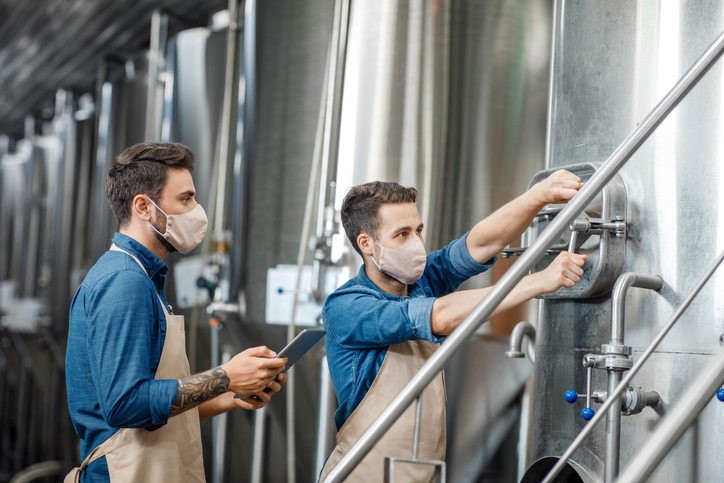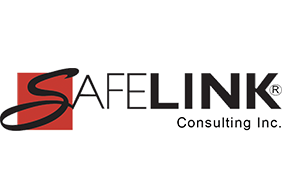Safety should be a major concern for all brewery owners. The risk of accidents and injuries in the workplace can result in increased worker’s compensation costs, decreased production due to out-of-work employees, costly OSHA citations for failure to protect employees, and possible lawsuits. These risks can be reduced and, in some cases, mitigated by establishing an adequate Health and Safety Program for your business.
Keeping current with OSHA safety regulations can be a giant obstacle in your efforts to streamline safety as a business owner. Here, SafeLink provides you some guidelines that cover the most frequently cited regulations in the Brewing Industry to help you ensure that your business is compliant with OSHA regulations. The following provides information on the top four (4) standards cited by OSHA during the period January 2020 to August 2021.
- 1) Hazard Communication
OSHA’s Hazard Communication standard 1910.1200 is the number one most frequently cited regulation in breweries, Often this is because the brewery is not aware of the requirements of the standard.
The Hazard Communication standard requires employers to have:
- A written Hazard Communication Program.
- A labeling system for secondary containers.
- Safety Data Sheets for all chemicals in the brewery kept on file and readily accessible to employees.
- Providing employees with the appropriate Personal Protective Equipment (PPE) for safe handling of chemicals.
- Brewery safety training for employees should include their brewery’s Hazard Communication Program and all of its specific elements.
- Training must be conducted after the hire of a new employee, when a new hazard is present in the workplace, and in some states annually.
2) Respiratory Protection
The Respiratory Protection standard 1910.134 was the second most cited standard for breweries in this time period. It is important for business owners to understand that this standard aims first to eliminate and, when possible, reduce the atmospheric contaminants presented in the brewery. If the contaminants cannot be eliminated through engineering and administrative controls, then PPE must be utilized to mitigate the risk of exposure beyond OSHA’s established PEL limits. OSHA determines that it is the responsibility of the brewery owner to define, communicate, and protect their employees from all known hazards. Variations of this standard may be specified further by your State OSHA Plan. It is crucial that you understand which regulations apply to you to determine which aspects are required or are voluntary.
General Requirements for the Respiratory Protection Program include:
- Selecting and providing an appropriate respirator based on the respiratory hazard(s) to which the worker is exposed and workplace and user factors that affect respirator performance and reliability.
- Selecting a NIOSH-certified respirator. The respirator shall be used in compliance with the conditions of its certification.
- Conducting a confidential medical questionnaire for each employee required under your Respiratory Protection Program to wear respirators.
- Performing fit testing to ensure the respirator fits the worker to adequately protect from the hazard.
- Reviewing and updating the Respiratory Protection Program annually and whenever a new hazard is introduced into the workplace.
An often-overlooked part of the Respiratory Protection Program includes the requirement of conducting a medical questionnaire for each employee that utilizes respiratory protection in your workplace. Using a respirator may place a physiological burden on employees that varies with the type of respirator worn, the job and workplace conditions in which the respirator is used, and the medical status of the employee. OSHA provides a medical questionnaire for your use in the workplace to determine these health risks of each employee under Appendix C of 1910.134. After completing the medical questionnaire further medical evaluation may be needed to determine whether it is safe for your employees to wear the necessary respiratory protection.
Some respirators may require fit testing to ensure the size of the respirator is the appropriate to each employee. Appendix F of 1910.134 provides further clarification on how to properly administer a fit testing protocol in your workplace. OSHA requires that fit testing be performed annually.
Training employees on the hazards associated with air contaminants and the specific role they will play in protecting themselves will help the employer establish a safe working environment.
3) Medical Services and First Aid
The third most cited OSHA standard in breweries was standard 1910.151, regarding Medical Services and First Aid. This standard's purpose is to establish a guideline for what first aid equipment, procedures, and which personnel are required to handle emergency injuries or illnesses caused by a hazard in the workplace.
The General requirements for the Medical Services and First Aid standard include:
- Ensuring that medical personnel are readily available for planning or consulting on Plant Health matters.
- Determining the distance of the closest hospital, clinic, or infirmary from the brewery.
- If the distance is too great to adequately respond to emergencies in the workplace, on-site trained personnel must be available to render first aid to employees.
- An adequate first aid kit must be made available and its location must be communicated to all employees for quick access in the event of an emergency.
- An Eye Wash station must be present in your facility and made ready for immediate emergency use if employees may be exposed to corrosive materials.
4) Machine Guarding
The OSHA standard for Machine Guarding, 1910.212, was the fourth most cited standard and addresses the practices and procedures necessary to prevent injury while employees perform servicing, maintenance, and production activities. Failure to comply with the requirements of this standard can often lead to very serious consequences. Many workplace injuries in the United States have been caused by the improper use of machinery or the removal of safeguard components. Throughout the brewing process brewers sometimes work with moving machinery that presents the possibility of bodily injury. As an employer in the Brewing Industry, it is important to promote and encourage the reporting of damaged machines, or missing safeguards. Without communication of these hazards, it’s easy for these things to be overlooked and shelved on your list of things to do. Your responsibility as an employer is to immediately remedy these hazards and concerns to protect your employees.
Please use the above information as a reference point to examine your brewery health and safety program. If you find areas where you are lacking, then you will be aware of where you need to focus your efforts to improve your health and safety program. It can be difficult as a small business owner to find the time and energy to successfully manage a health and safety program. That is why SafeLink Consulting encourages any owners who feel overwhelmed or unsure of how to proceed to contact us. Let SafeLink Consulting take the burden of OSHA brewery regulations off your shoulders and allow us to help manage your brewery safety plan with customized manuals, onsite and online employee training, and ongoing consultation services.
You may also find it helpful to use the Brewery Safety Checklist to help you assess your program. Get yours FREE here:
Learn more about what SafeLink Consulting can do to help your business with compliance services, including safety compliance, to meet OSHA training requirements and quality system consulting to meet FDA compliance. SafeLink Consulting assists businesses with workplace safety training, infection control training, HIPAA training online, quality systems, assessments, audits, due diligence, and more.
Beverage Industry compliance - assisting beverage businesses such as the craft brewery, winery, cidery, distillery, vintner with meeting OSHA compliance, health & safety, FDA requirements / GMP - Good Manufacturing Practices.
Other industries include:
Dentistry compliance - assisting the dental practice with meeting requirements for OSHA, HIPAA, EPA, and CDC guidelines, patient safety and employee health & safety
Dental Laboratory compliance - assisting the dental lab with meeting requirements for OSHA, FDA, and CDC guidelines, employee health & safety, plus FDA requirements for lab manufacturing custom implant abutment /gmp for medical device manufacturers
Medical Device Manufacturers compliance - assisting with meeting OSHA compliance & FDA requirements, GMP - good manufacturing practices
General Industry compliance - assisting with OSHA compliance and FDA compliance as it pertains to the specific business







Leave Comment